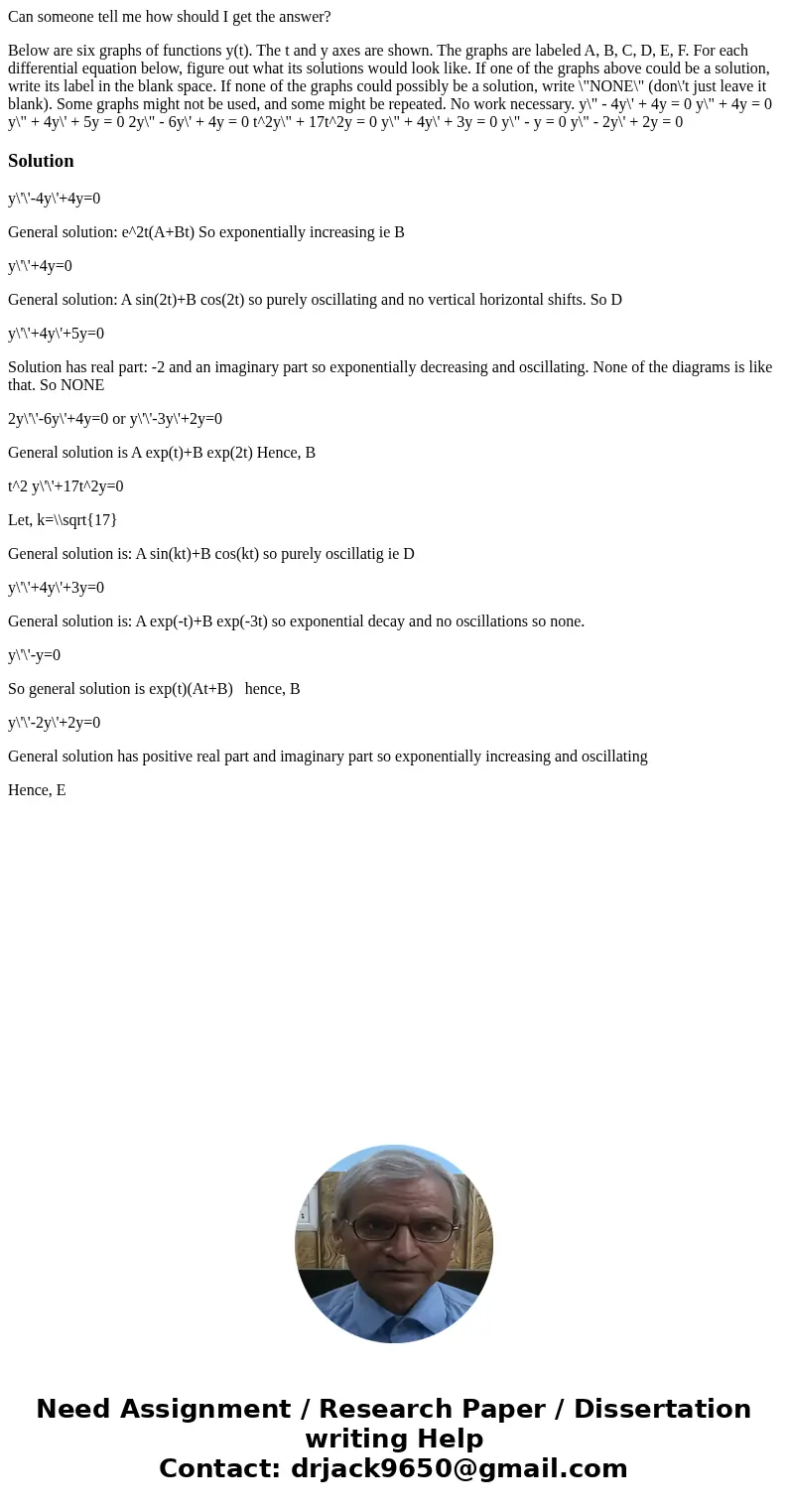Can someone tell me how should I get the answer Below are si
Can someone tell me how should I get the answer?
Below are six graphs of functions y(t). The t and y axes are shown. The graphs are labeled A, B, C, D, E, F. For each differential equation below, figure out what its solutions would look like. If one of the graphs above could be a solution, write its label in the blank space. If none of the graphs could possibly be a solution, write \"NONE\" (don\'t just leave it blank). Some graphs might not be used, and some might be repeated. No work necessary. y\" - 4y\' + 4y = 0 y\" + 4y = 0 y\" + 4y\' + 5y = 0 2y\" - 6y\' + 4y = 0 t^2y\" + 17t^2y = 0 y\" + 4y\' + 3y = 0 y\" - y = 0 y\" - 2y\' + 2y = 0Solution
y\'\'-4y\'+4y=0
General solution: e^2t(A+Bt) So exponentially increasing ie B
y\'\'+4y=0
General solution: A sin(2t)+B cos(2t) so purely oscillating and no vertical horizontal shifts. So D
y\'\'+4y\'+5y=0
Solution has real part: -2 and an imaginary part so exponentially decreasing and oscillating. None of the diagrams is like that. So NONE
2y\'\'-6y\'+4y=0 or y\'\'-3y\'+2y=0
General solution is A exp(t)+B exp(2t) Hence, B
t^2 y\'\'+17t^2y=0
Let, k=\\sqrt{17}
General solution is: A sin(kt)+B cos(kt) so purely oscillatig ie D
y\'\'+4y\'+3y=0
General solution is: A exp(-t)+B exp(-3t) so exponential decay and no oscillations so none.
y\'\'-y=0
So general solution is exp(t)(At+B) hence, B
y\'\'-2y\'+2y=0
General solution has positive real part and imaginary part so exponentially increasing and oscillating
Hence, E

 Homework Sourse
Homework Sourse